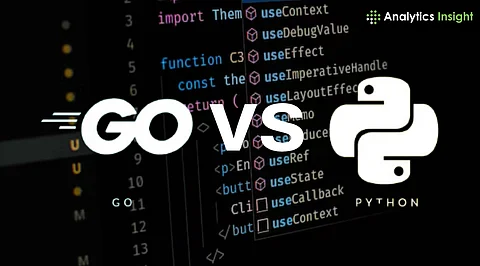

Go delivers faster execution and better concurrency for large-scale data tasks.
Python offers simplicity and rich libraries ideal for data analysis and machine learning.
The best choice depends on project needs—Go for performance, Python for flexibility.
When it comes to working with data, a key consideration is choosing the most suitable programming language. Given the growing importance of data analysis, from business reporting to machine learning model training, selecting the right language is crucial. With numerous options available, deciding between popular choices like Go and Python can be a challenge.
Go and Python are both hot in the data world. The thing is, they each have their strengths, and how well they do the job depends on what you need them for.
Go (or Golang) was made by Google to be fast. It turns code directly into machine language, making it quick. If you're dealing with big amounts of data where speed matters, Go is a great option. Think about things that need quick responses, handle data right away, or deal with tons of requests at the same time. Go's speed and the way it handles multiple things at once make it suitable for these situations.
Python isn't super speedy since it translates code on the fly, unlike Go. But honestly, for most data stuff, it's quick enough. Plus, it's easier to learn and has tons of tools all set to go (more on this later). Even if it's not the fastest out there, it's easy to use, and all those great tools often make up for it.
Python is famous for being clear and simple to read. It's easy to learn, which is why lots of newbies and experienced coders like it. Data people, researchers, and scientists often pick Python first because it's so straightforward. You can write code quickly and usually with fewer lines.
Go is a bit more strict. It feels pretty clean, but if you're used to Python, it might seem a little stiff. It takes some time to pick up, mainly if you're familiar with languages where you don't have to spell out every little thing about your variables. The good thing is, this setup can help cut down on mistakes and keep your code neat, especially when your projects get bigger.
Python is a great pick because it has tons of easy-to-use libraries. Think of them as tools that help you with everyday tasks. Stuff like working with data, stats, and even creating machine learning models is easy with libraries like Pandas, NumPy, Dask, and Scikit-learn. This means you can get stuff done faster without writing everything from scratch.
Go doesn't have as many tools for data science as Python just yet. It has libraries for things like working with JSON data, doing multiple things at once, and doing basic math.
It lacks fancy tools for serious stats or complex machine learning. If you're using Go for top-notch performance, you might have to create your tools, which eats up time.
Also Read: Top AI Programming Libraries You Should Learn in 2025
Go is good at doing many things at once. It was made for that reason. It uses goroutines, which are like easy-to-manage threads. This makes it great for creating apps that deal with tons of data, like web servers. Python can also handle several tasks at the same time using things like threading.
But it has a problem: the Global Interpreter Lock (GIL) stops true parallelism in lots of situations. There are fixes like asyncio and Ray, but those make things hard. If you need systems that can grow, Go is usually better.
Python is great for checking out data, cleaning it up, creating stats models, or even doing machine learning. You can easily play around with ideas using Jupyter notebooks, plus it has amazing charting tools like Matplotlib and Seaborn.
On the other hand, Go is often the language of choice for backend data services, building data pipelines fast, and taking in data super quick. If a company is into microservices or needs to manage tons of data points every second, they often go with Go because it can manage heavy loads with very little lag.
Go and Python are both good. Go is fast and handles a lot at once, making it a solid choice for simpler system tasks. Python is easy to pick up, versatile, and has a ton of data science libraries.
So, which one should you pick? It all boils down to what you need. Pick Go if you need something fast that can do many things at once. If you're doing data analysis or machine learning, Python is likely the better choice because of all the tools it offers.
